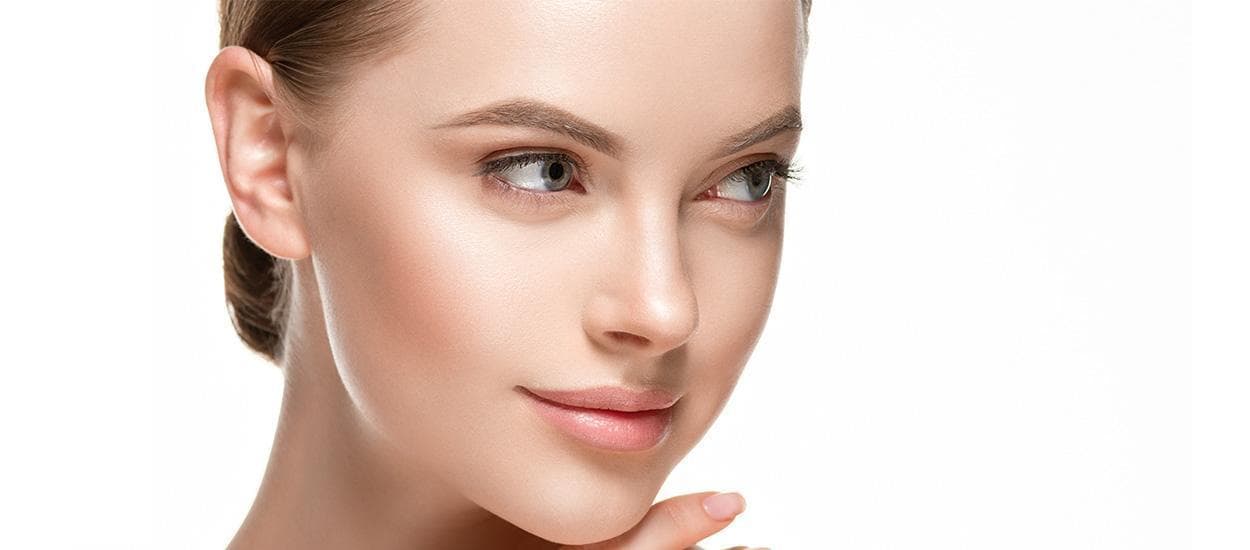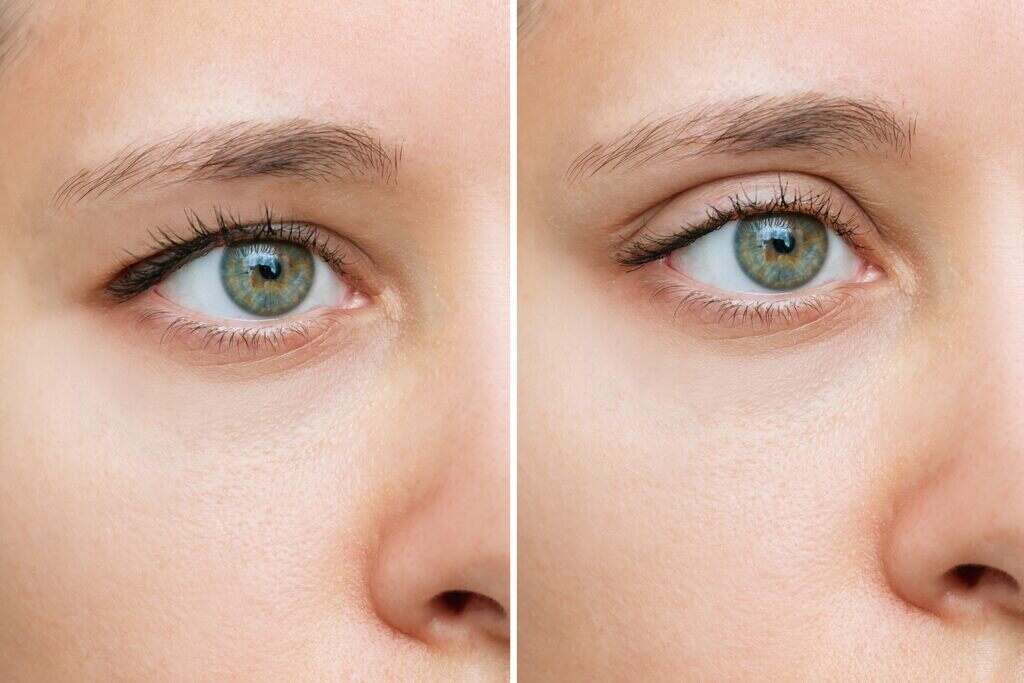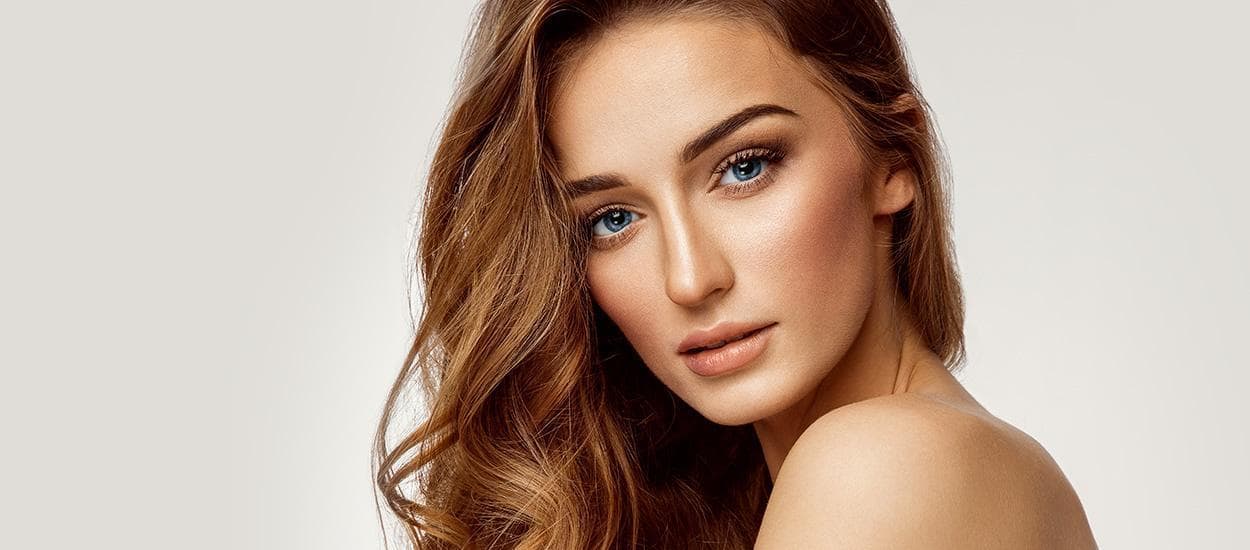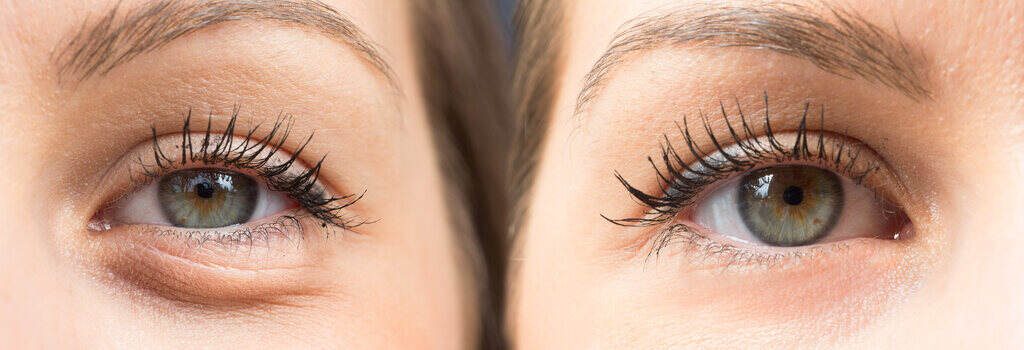Upper Eyelid Surgery

Do your eyes appear tired and droopy due to aging? Upper eyelid aging is a very common concern. As we age, our skin loses elasticity and collagen, which can cause the upper eyelids to droop. This can make you look tired and withdrawn, even if you feel well-rested. Common signs of upper eyelid aging include hooding, loss of eyelid crease, excess skin, fatigue, or tiredness in the eyes. In some cases, severely drooping eyelids can even interfere with your vision.
If you're concerned about drooping eyelids, make an appointment at our clinic in Bangkok, Thailand to determine if upper eyelid surgery (blepharoplasty) is right for you. The cost of an upper blepharoplasty in Thailand can be more affordable than you imagined.
Table of contents
- Am I A Candidate For Upper Eyelid Surgery?
- What Is An Upper Blepharoplasty?
- Preparing For Eyelid Surgery
- Results and Follow-up
- Lower Eyelid Surgery
- What is Lower Blepharoplasty?
- Am I A Candidate For Lower Eyelid Surgery?
- Preparing for Lower Blepharoplasty at Nirunda Clinic
- The Process
- Results and Follow-Up
- Visit Nirunda Clinic to Learn More
Am I A Candidate For Upper Eyelid Surgery?
Here are some common signs that upper eyelid surgery (blepharoplasty) might be right for you:
- Puffy upper eyelids: This can make you look tired, even when you're well-rested.
- Sagging upper eyelids: Drooping eyelids can create a hooded appearance and potentially obstruct your vision.
- Interference with your vision: This is a significant concern and warrants a consultation with a qualified oculoplastic surgeon or ophthalmologist as well.

What Is An Upper Blepharoplasty?
Blepharoplasty, also known as eyelid surgery, is a procedure designed to address concerns with the upper eyelids. This surgery can improve both your appearance and vision by removing excess skin and fatty tissue that may be causing:
- A hooded appearance
- Difficulty applying makeup
- Limited field of vision
Our clinic in Bangkok offers various upper blepharoplasty surgery techniques to achieve the desired results for each patient. Here's a breakdown of the available options:
- Full-incision double eyelid surgery: This popular choice provides a permanent solution for patients seeking significant eyelid enhancement and correction of age-related concerns. It works effectively for all eye shapes, especially those with severe drooping that hinders vision.
- Partial-incision double eyelid surgery: This minimally invasive procedure involves smaller incisions to address excess fat and loose muscle. The muscles are then tightened and secured with sutures to create a new eyelid crease. Compared to full-incision surgery, this method causes minimal scarring and discomfort. This technique is particularly popular in Asia and is regularly performed at our Bangkok clinic.
- Buried suture (non-incision) double eyelid surgery procedure: Also known as scarless double eyelid surgery, this minimally invasive approach utilizes internal sutures to create natural-looking double eyelids. Pioneered decades ago, this method remains a popular choice for those seeking a non-invasive fold-creation technique.
Preparing For Eyelid Surgery
Before undergoing eyelid surgery, it's important to be well-prepared to ensure a smooth and successful experience. Here's our complete guide:
Medical History Disclosure:
Be upfront with your surgeon about your complete medical history. This includes:
- Current medical conditions
- Past surgeries and anesthesia experiences
- Dental issues
- Any allergies to medications or foods
Additional Tests:
Additional tests may be required for patients with underlying health conditions. These could include:
- Blood tests
- X-rays
- Electrocardiogram (EKG)
- Consultation with an internal medicine doctor
Medications and Supplements:
Your doctor will provide a list of medications, herbal remedies, and supplements to discontinue at least a week before surgery.
Bring a complete list of your current medications to your appointment. Examples include:
- Aspirin
- Painkillers and anti-inflammatory drugs
- Cod liver oil
- Vitamins A, C, and D
- Seaweed and omega-3 supplements
Smoking and Alcohol:
- To optimize healing and prevent complications, stop smoking at least six weeks before surgery.
- Avoid alcohol for 24 hours before surgery and for at least one week after.
Pre-Surgery Hygiene:
- Please take a shower and wash your hair the day before your surgery.
- Avoid using any cosmetic products around your eyes for at least a week before the procedure.
Food and Fluids:
- Please follow your doctor's specific food and drink restrictions. These are crucial to prevent complications during anesthesia administration.
Post-surgery Care:
- Wear sunglasses for at least a week after surgery to protect your eyes from light sensitivity.
- Arrange for someone to drive you home after surgery as you'll be under the effects of anesthesia.
- By following these guidelines, you can ensure you're well-prepared for successful eyelid surgery and a smooth recovery.
Results and Follow-up
After upper eyelid surgery, patients can expect some initial swelling and bruising. This is common, and it typically subsides within 1-2 weeks. Most patients can return to their normal activities within a week, although full recovery may take a few weeks as the final results become more apparent. Following post-operative care instructions is crucial to ensure optimal healing and achieving the desired aesthetic outcome. These include:
- Applying a cold pack as a soft compress to the eyes for the first few days.
- Not smoking and drinking alcohol for at least 5 days after the surgery.
- Keeping the wounds dry and clean. Baby wipes are also suggested to clean the facial area.
- Not applying make-up until after the sutures are removed.
It's important to remember that everyone heals at their own pace. While this is a general timeline, your recovery experience may vary.
Lower Eyelid Surgery

Puffy under-eyes can add years to your face, making you look tired or even grumpy. If you've noticed these stubborn eye bags and they're bringing you down, you might be a good candidate for lower blepharoplasty, also known as eye bag removal surgery at our clinic in Bangkok.
What is Lower Blepharoplasty?
Lower blepharoplasty is a cosmetic surgical procedure that targets puffiness and wrinkles in the lower eyelid area. It can address:
- Excess fatty deposits that create eye bags
- Loose skin that contributes to a tired appearance
- Fine lines and wrinkles around the lower eyelids
Am I A Candidate For Lower Eyelid Surgery?
This procedure can be a great option for adults who are generally healthy and have realistic expectations about the outcome. Here are some signs you might be a good candidate:
- You have noticeable under-eye puffiness or bags
- Loose skin in the lower eyelid area is drooping or causing milia (tiny white bumps)
- Fine lines and wrinkles around the lower eyelids bother you
Preparing for Lower Blepharoplasty at Nirunda Clinic
Here's what to expect as you prepare for your lower blepharoplasty at Nirunda Clinic:
- You'll meet with a qualified eye surgeon to discuss your desired outcome and review your medical history.
- The surgeon will perform a physical examination, vision test, and take photographs of your eyelids.
- To optimize healing, you'll be advised to stop smoking at least two weeks before surgery.
- You may also need to adjust certain medications, particularly those that can thin your blood.
- As your surgery will be performed on an outpatient basis, please arrange for transportation home after the procedure.
The Process
During a consultation, your surgeon will discuss your goals and assess your suitability for the surgery. There are two main approaches to lower blepharoplasty:
- Transconjunctival blepharoplasty: This technique involves making an incision inside the lower eyelid, leaving no visible scars on the outside. It's ideal for addressing excess fat but may not be suitable for significant skin concerns.
- Transcutaneous blepharoplasty: This approach involves an incision along the lower lash line. It allows for the removal of both excess fat and skin, resulting in a more dramatic rejuvenation.
The surgery itself is typically performed under local anesthesia with sedation. Depending on the extent of correction needed, the procedure can take one to two hours.

Results and Follow-Up
After surgery, you can expect some swelling, bruising, and discomfort. These side effects will gradually subside within a week or two. Your surgeon will provide detailed instructions on post-surgical care, including how to manage swelling, use cold compresses, and keep the incision clean. Follow-up appointments are crucial to monitor healing and ensure optimal results. Here are our detailed after-care instructions:
- Sleep with your head raised for a few days to reduce swelling.
- Use a cold compress on your eyes for a few days to ease discomfort.
- Avoid reading, watching TV, and strenuous activity for a week to prevent irritation.
- No smoking or drinking alcohol for at least 5 days.
- Keep your wounds dry except when cleaning.
- Use cotton swabs with saline solution to clean your wounds 2-3 times a day.
- Your doctor will remove stitches and check your healing in 5-7 days. Swelling may last for a few more weeks.
- Don't wear makeup until your stitches are removed.
- Avoid spicy food and strenuous exercise for about a week after surgery.
- Take all medications as prescribed by your doctor.
- Tell your doctor if you experience any pain, redness, irritation, or problems with your incisions.
- Don't wear contact lenses for at least a week after surgery.
- Avoid rubbing your eyes for at least 2 months to allow proper healing.
- Use pain medication only as directed by your doctor.
Visit Nirunda Clinic to Learn More
Contact Nirunda Clinic in Bangkok today for a consultation to learn more about upper, lower, or double eyelid surgery and how we can support you.
FAQs

Testimonials
Be the first to leave a review.
This review has no replies yet.





